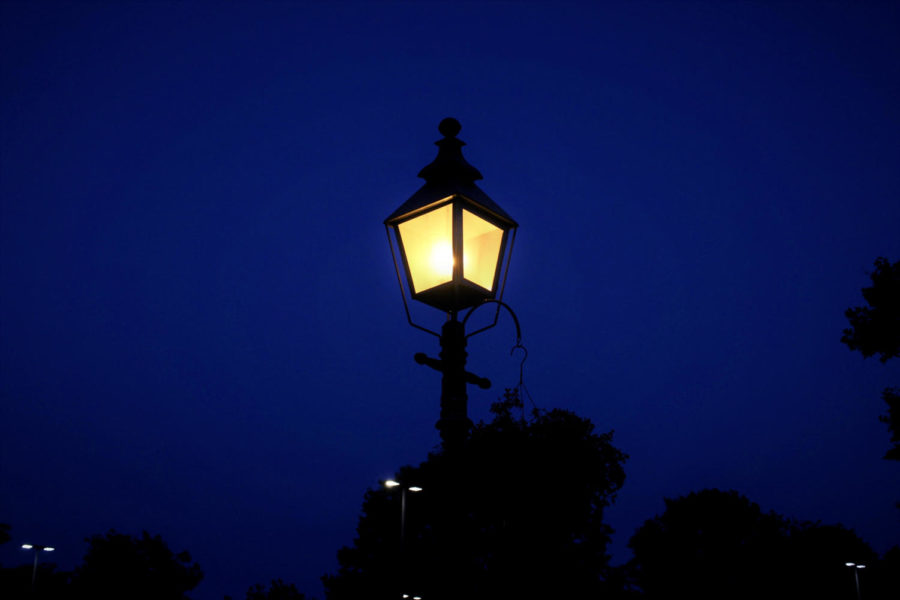Is Your Favorite Color Blue? Here’s Why:
December 3, 2021
What color do you see when you think of Blue? Pale blue? Deep indigo? Cobalt; sapphire; Persian? Each variation of the color blue comes with its own unique meaning. Some epitomize sadness while others symbolize serenity.
Colors are used every day as methods of communication. Common knowledge tells us red means “stop” and green means “go”. But colors can also be used to coerce a person’s emotions.
The color blue is most commonly associated with calm or tranquility. It is known to clear the mind and allow people to get a fresh start.
The calming effects of blue are so influential that when streetlights in numerous countries went from yellow to blue, crime and suicide rates dropped. According to an article in the Seattle Times, blue streetlights were added to the streets of Glasgow Scotland in 2000 to improve the scenery. Crime rates dramatically decreased in the blue-light-illuminated areas and blue streetlights became increasingly popular.
These blue streetlights were also added to the railroads of Yokohama, Japan and miraculously, suicide rates plummeted to zero.
This could have happened for many reasons. One of the causes may be just because blue is a more calming and pleasurable color versus traditional yellow streetlights. But it also could be because blue light is often associated with the police. Both of these ideas could even concatenate to elucidate the massive effect the blue lights had on society; the calming effect associated with fewer suicides and the police light effect associated with the decreasing crime rates.
Not only does blue hold these mental effects over society, but the color can also have physical effects on a person. Blue is known to lower heart rate, blood pressure, and even body temperature. When you see a picture of a frozen lake that emits a wintery blue and you feel a little cold, your body’s temperature has literally dropped because of the color of the image.
The color blue also manipulates performance. According to Neurofied, a study conducted during a sports game showed that teams facing opponents wearing red lost more often than teams facing opponents wearing blue. Neurofied explained that the color red symbolizes fear or even failure, heightening awareness due to the “danger” associated with red. Meanwhile, during the sports study, blue may have calmed the minds of the players, made them feel less intimidated during the game, and even increased the creativity within each player; helping them to win.
Blue soothes the mind. The color allows you to feel ataraxy. Blue is also known to stimulate more clear thoughts, opening your mind and increasing overall productivity and motivation. The color blue tends to positively affect people, however, it can have negative effects as well.
Blue can also provoke sad, unfriendly, or depressing feelings in a person. Some blues tend to have this effect more than others. The phrase “feeling blue” is a direct example of this connection to the color blue being depressing.
Another interesting finding of the psychological effects of the color blue is color therapy. Color therapy is the use of wavelengths and frequencies of colors to treat both mental and physical health problems. Blue is the most common color used in color therapy to treat depression. So although blue is often described as a color that triggers sad feelings, it is also used to rid people of depression.
This strange effect that the sad-looking color has on depression is due to depression actually altering the way people see colors. Depression may cause colors to be less vibrant and hard to differentiate. This may be why blue is used to treat depression and anxiety through color therapy.
Yet another way the physical effects of blue are used in society is actually through weight loss. Many weight loss professionals recommend eating off of blue plates rather than white plates, as the color blue stimulates the brain into believing that the food is unappetizing. The color blue is associated with poisonous or moldy foods. The human brain is wired to avoid blue foods, making blue one of the least appealing colors food-wise. This concept helps many through weight loss programs.
Blue is the rarest naturally occurring color in the world. But blue is also the world’s favorite color. According to YouGovAmerica, blue is favored by 10 countries across the world. Over 30% of people in the United States chose blue over any other color in this survey conducted by YouGovAmerica. Blue is definitely one of the most popular colors, and the various physical and emotional properties it possesses help blue to also be one of the most interesting colors in the world.


Cristian Gomez • Dec 5, 2021 at 10:17 pm
A very insightful piece, I never knew blue was such a special color, and that it was so useful to human psychology, maybe teachers should take heed of this research and put more blue in classrooms to make their kids feel more calmed instead of freaking out over a quiz that could affect their future, and make them think more rationally and logically.